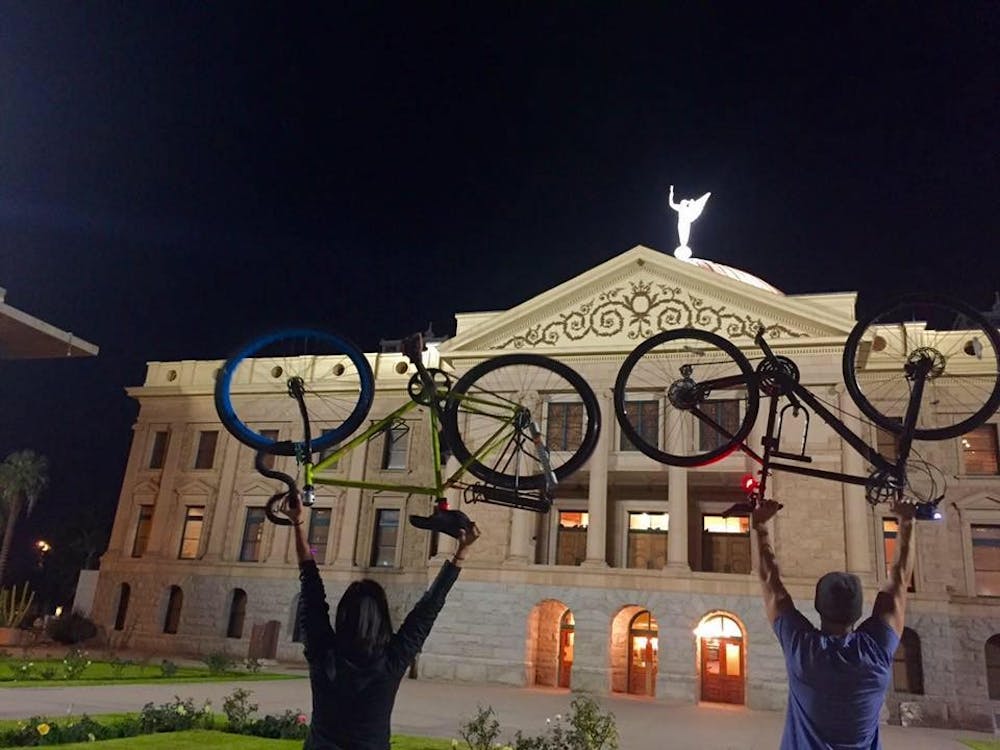There’s room for more than just motorists and buses on the roads.
Improving bike infrastructure in Phoenix is significant for its large population of bikers. Instituting reconstructions like the road diet of 40th Street can be beneficial towards the safety of cyclists.
According to the City of Phoenix’s Bicycle Master Plan, the road diet on 40th Street between McDowell Road and Indian School Road transformed the previously four-lane roadway without bike lanes into a two-lane roadway with a center turn lane and bike lanes. A study was conducted a year before and a year after the plan was implemented, showing a decrease in collisions by 43 percent.
The population of cyclists is growing in the downtown Phoenix area. The Bicycle Master Plan said bicycle commuters represent 0.76 percent — just under 5,000 people — of all Phoenix commuters.
Community member Jacob Brunswick moved from Norfolk, Virginia to downtown Phoenix.
“Just getting a group together and riding bikes around the city, it lets people know that bikes belong and that bike facilities are needed because we’re there,” Brunswick said.
Another community member, Rosa Luning, attended group riding events while visiting Phoenix from Amsterdam for an internship.
Luning said she heard that biking was not a popular activity in America, so she was pleasantly surprised at the amount of bike lanes in Phoenix. However, Luning noted that cars pay less attention to bikers in Phoenix than in Amsterdam.
“There were some parts where I didn’t really feel comfortable biking on the roads,” Luning said. “I would bike on the sidewalk every once in awhile.”
The road can be a dangerous place for bikers, especially on streets without sharrows or shared lanes.
The City of Phoenix said Phoenix has 596 miles of on-street facilities, 117 miles of off-street paths and 22 bike bridges and 20 bike tunnels making up 713 total bikeway miles as of January 2014.
On-street facilities the city is implementing include buffered bicycle lanes, colored bicycle lanes and shared lane markings. These are proving to be effective because they improve the visibility of bicyclists to motorists, provide traffic calming and allow bicyclists to be safe and comfortable while riding.
Joe Perez, bicycle coordinator of the City of Phoenix, said bike safety is improved by adding new bike lanes such as barrier protected bike lanes and improving existing canal banks that offer separate bicycle facilities from vehicles.
“The best way to improve infrastructure is to give priority and (preferred) signalization to bicyclists when they’re crossing large streets and providing physical separation either on the canal itself or with a physical barrier next to the bike lane,” Perez said. “We haven’t done (a physical barrier) yet, but I would certainly like to see that in the city.”
The police have helped bike safety by enforcing Arizona’s Three Foot Passing Law that requires drivers to give bikers a minimum of a 3-foot distance before passing them, reducing the risk of a collision.
Perez also said safety materials are distributed to elementary and middle schools helping to educate school-aged children about safety practices when bicycling on the road.
Knowing bike signals, communicating vocally with other bicyclists and simply paying attention and looking both ways are key safety tips for bikers, according to second year American studies Masters student Matthew Dennis.
Dennis is the head of Car Resistance Action Party Ride Phoenix, which gathers around 20 ASU students and downtown community members together promoting an alternative mode of transportation and bike safety.
“You want people to know what you’re going to do, you don’t want to be unpredictable,” Dennis said. “Accidents happen when you’re not paying attention.”
Reach the reporter at esounart@asu.edu or follow @emmasounart on Twitter.
Like The State Press on Facebook and follow @statepress on Twitter.




